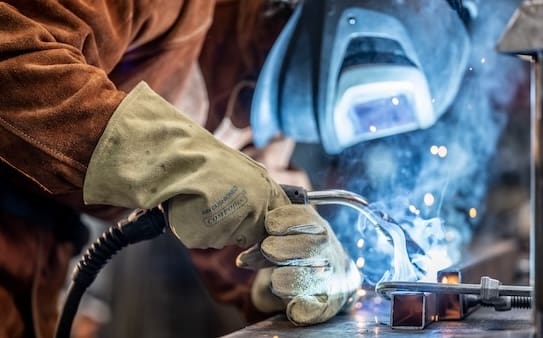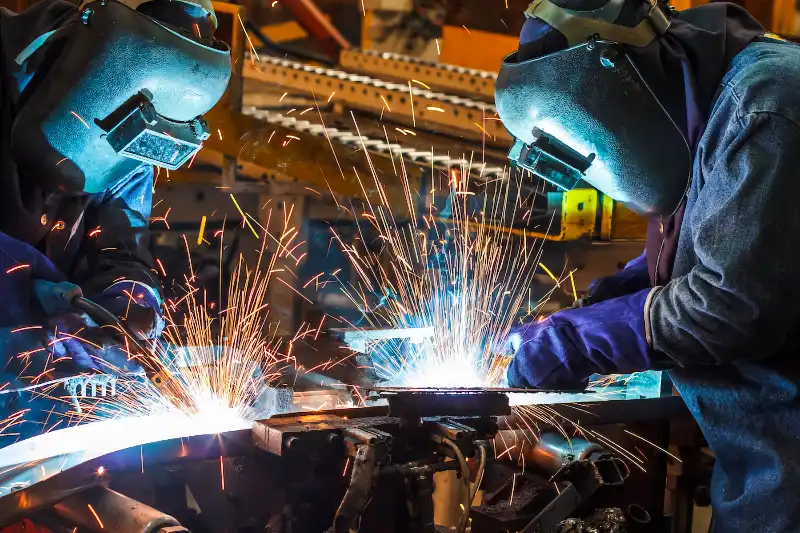Root reasons behind weld porosity and how Belgrade Welding fixes them
Wiki Article
Usual Welding Repair Issues and Exactly How to Address Them Properly
Welding repair services frequently run into a variety of concerns that can threaten the stability of the final product. Typical issues consist of insufficient penetration, porosity, and misalignment, among others. Each defect presents special difficulties that need specific techniques for resolution. Recognizing these issues is vital for welders intending to enhance their end results and skills. This conversation will explore these usual welding repair service problems and efficient techniques to address them.Inadequate Infiltration
Poor penetration occurs when the weld metal falls short to totally fuse with the base product, leading to weak joints and potential architectural failings. This issue often originates from not enough warm input, inaccurate electrode angle, or improper welding speed. Welders might encounter insufficient penetration as a result of a miscalculation of the necessary specifications for a certain material thickness or kind. Additionally, contamination on the base product's surface can hinder reliable bonding, intensifying the issue. To address poor penetration, welders ought to ensure suitable settings on their equipment and keep a clean job surface. Regular evaluation of welds is suggested to recognize any kind of deficiencies early, permitting timely corrections and the avoidance of compromised structural stability in bonded assemblies.Porosity
Porosity is an usual flaw in welded joints that shows up as small gas bubbles entraped within the weld steel. This problem can jeopardize the integrity of the weld, bring about decreased strength and prospective failing under anxiety. Belgrade. Porosity commonly arises from contamination, moisture, or inappropriate welding techniques, which permit gases to run away into the molten weld pool. To address porosity, welders should assure proper surface area preparation, maintain a clean workplace, and make use of suitable welding criteria. Furthermore, selecting the best filler material and shielding gas can mitigate gas entrapment. Routine inspection and testing of welds can help determine porosity early, guaranteeing prompt restorative activities are taken, thus preserving the top quality and integrity of the welded frameworkImbalance
Imbalance in welding can arise from various variables, including improper arrangement and thermal development. Recognizing the origin is essential for efficient resolution. Numerous adjustment techniques are offered to straighten elements and assure structural honesty.Root causes of Imbalance
Welding misalignment usually originates from a range of underlying problems that can compromise structural stability. One main cause is inappropriate fit-up of parts before welding, which can result in voids and uneven surfaces. Variations in thermal expansion throughout the welding procedure can additionally cause distortion, especially if the materials being joined have different coefficients of development. Furthermore, insufficient clamping and fixturing might fall short to hold parts securely in position, leading to motion throughout welding. Badly conserved tools, consisting of welding machines and devices, may introduce disparities in the weld bead, more adding to misalignment. Operator error, stemming from inadequate training or experience, can also play a significant role in creating misaligned welds.
Modification Strategies Available
Resolving imbalance effectively requires a mix of corrective techniques customized to the certain problems handy. One usual technique is the use of jigs or fixtures to hold parts in the right position during welding, ensuring constant placement. Additionally, pre-heating the materials can help in reducing distortion and boost fit-up. For considerable misalignment, mechanical realignment methods, such as utilizing hydraulic jacks or clamps, can be used to deal with the setting prior to welding. Post-weld heat treatment may additionally be essential to relieve stress and anxieties caused by misalignment. Cautious examination and adjustment during the arrangement stage can avoid imbalance concerns from ending up being substantial issues, advertising a smoother welding procedure and enhancing overall structural integrity.Distortion
Distortion is an usual difficulty in welding that can arise from numerous factors, consisting of uneven cooling and heating. Comprehending the reasons for distortion is vital for implementing efficient avoidance methods. Addressing this issue not just improves architectural stability however additionally improves the general quality of the weld.Root causes of Distortion
When subjected to the extreme warmth of welding, products often undergo changes that can cause distortion. This phenomenon largely occurs from thermal development and tightening during the welding procedure. As the weld location heats up, the product broadens; upon cooling, it acquires, which can produce inner stresses. In addition, irregular home heating throughout a workpiece can intensify these anxieties, leading to bending or bending. The kind of material likewise plays a significant function; steels with differing thermal conductivity and coefficients of expansion might react differently, bring about unpredictable distortions. Furthermore, poor joint design and inadequate fixturing can contribute to misalignment throughout welding, increasing the likelihood of distortion. Recognizing these causes is essential for efficient welding repair work and prevention approaches.Prevention Techniques
Efficient avoidance methods for distortion during welding emphasis on regulating warmth input and guaranteeing proper joint design. Preserving a constant heat input assists to lessen thermal development and tightening, which can result in distortion. Using strategies such as preheating the work surface can additionally lower the temperature level gradient, promoting uniform heating. Furthermore, selecting ideal joint designs, such as T-joints or lap joints, can enhance stability and minimize stress and anxiety concentrations. Carrying out appropriate fixturing to safeguard the workpieces in place further aids in preserving positioning throughout the welding procedure. Staggered welding sequences can disperse warmth extra uniformly, stopping localized distortion. By using these approaches, welders can greatly decrease the possibility of distortion and boost the overall high quality of their welds.Splitting
Breaking is a typical issue run into in welding repair services, commonly resulting from various elements such as improper air conditioning prices, material option, or inadequate joint prep work. The incident of fractures Montana Mobile Welding and Repair Belgrade Welding can greatly compromise the stability of the weld, causing possible failings during procedure. To resolve this problem, welders must initially assess the origin, making sure that materials work and appropriately picked for the details application. Furthermore, regulating the air conditioning price throughout the welding process is essential; rapid cooling can cause stress and result in breaking. Correct joint style and preparation likewise add to lessening the threat. Implementing these approaches can boost weld quality and sturdiness, eventually reducing the chance of fracturing in ended up weldments.
Incomplete Fusion
A substantial concern in welding repairs is insufficient combination, which happens when the weld metal does not adequately bond with the base product or previous weld passes - Belgrade Welding. This flaw can lead to weaknesses in the joint, potentially endangering the honesty of the bonded framework. Elements adding to incomplete blend include inadequate heat input, incorrect welding strategy, and contamination of the surfaces being signed up with. To address this issue efficiently, welders ought to guarantee proper pre-weld cleaning and surface area prep work, along with readjust their welding criteria to achieve ample infiltration and combination. Normal assessment throughout the welding procedure can likewise aid identify insufficient fusion early, permitting timely rehabilitative measures to boost the general top quality of the weldOverheating
While welding repair work can boost structural honesty, overheating offers a considerable difficulty that can lead to material degradation. Excessive heat during welding can alter the mechanical residential properties of metals, resulting in decreased strength, increased brittleness, and bending. This sensation is specifically critical in high-stress applications where structural reliability is paramount. Determining getting too hot can entail visual evaluations for staining or distortion, along with keeping track of temperature level throughout the welding procedure. To alleviate the threats connected with getting too hot, welders need to employ proper techniques, such as managing warmth input, readjusting traveling rate, and using appropriate filler materials. In addition, applying pre- and post-weld warmth therapies can aid bring back product residential properties and boost the total top quality of the fixing, ensuring long-lasting efficiency and safety and security.Frequently Asked Questions
What Are the Usual Indications of a Welding Flaw?

Just How Can I Evaluate My Welds for Top quality?
To examine welds for top quality, one can use visual assessments, ultrasonic screening, and radiographic techniques. Each method ensures structural stability, determines problems, and validates adherence to defined requirements, ultimately enhancing the integrity of the bonded joints.What Safety Preventative Measures Should I Take While Welding?
When welding, one must prioritize security by putting on ideal personal safety tools, making sure correct air flow, safeguarding combustible materials away, preserving a clean work space, and knowing environments to avoid injuries and mishaps.Can I Fix a Weld Without Redoing the Entire Joint?
Repairing a weld without redesigning the whole joint is possible, depending upon the damages (Montana Mobile Welding and Repair Belgrade Fabrication). Techniques such as grinding, including filler material, or using a welding process can successfully deal with details problems while protecting the surrounding frameworkWhat Tools Are Important for Reliable Welding Fixes?
Essential devices for reliable welding fixings consist of a welding maker, wire brush, grinder, protective gear, clamps, and filler products. Each device plays an essential role in making certain top quality and safety and security throughout the repair work process. Porosity normally develops from contamination, moisture, or incorrect welding methods, which permit gases to escape right into the molten weld pool. Poorly kept tools, including welding machines and devices, may present inconsistencies in the weld bead, additional contributing to misalignment. When subjected to the intense heat of welding, products usually undergo changes that can lead to distortion. Breaking is an usual concern run into in welding repairs, commonly resulting from numerous factors such as incorrect air conditioning prices, material selection, or poor joint prep work. A considerable concern in welding fixings is incomplete combination, which happens when the weld metal does not appropriately bond with the base product or previous weld passes.Report this wiki page